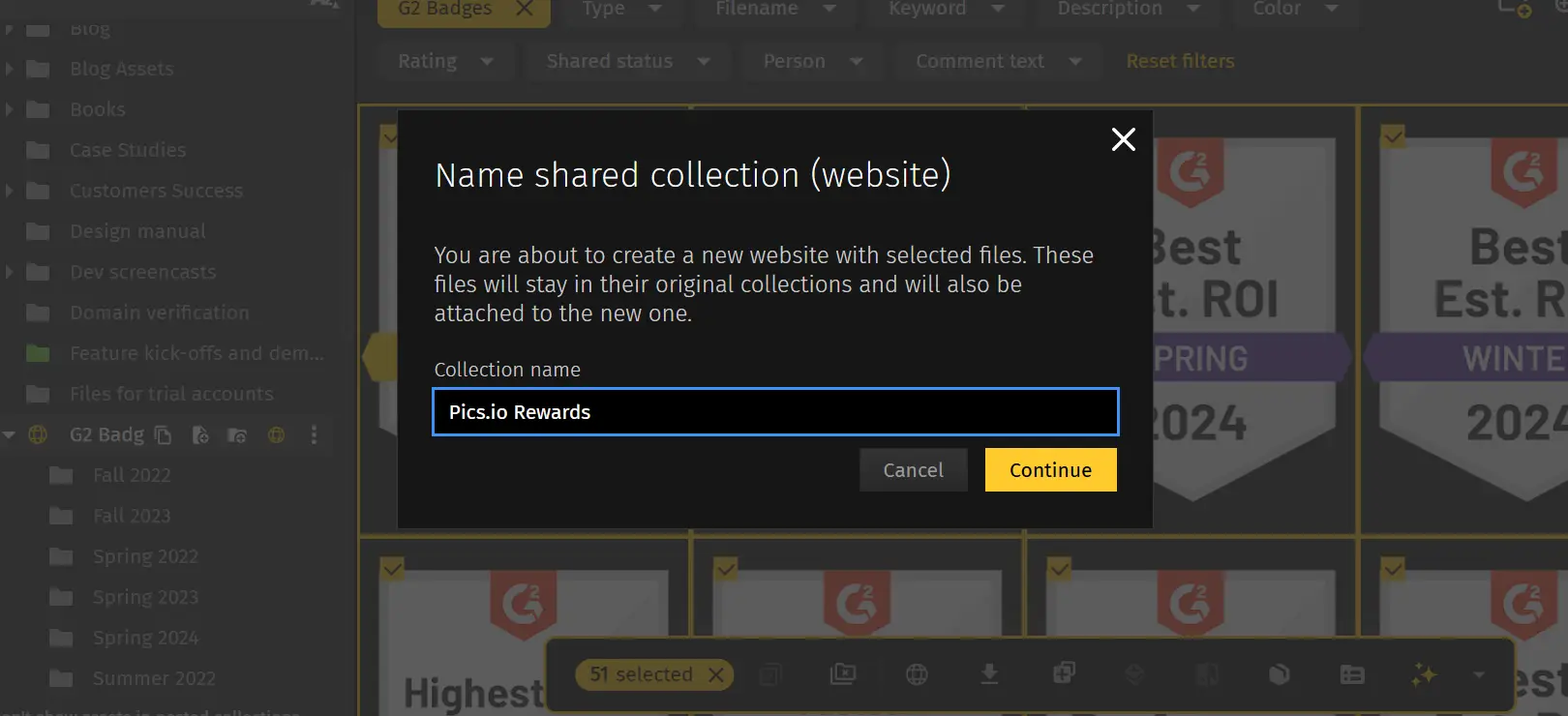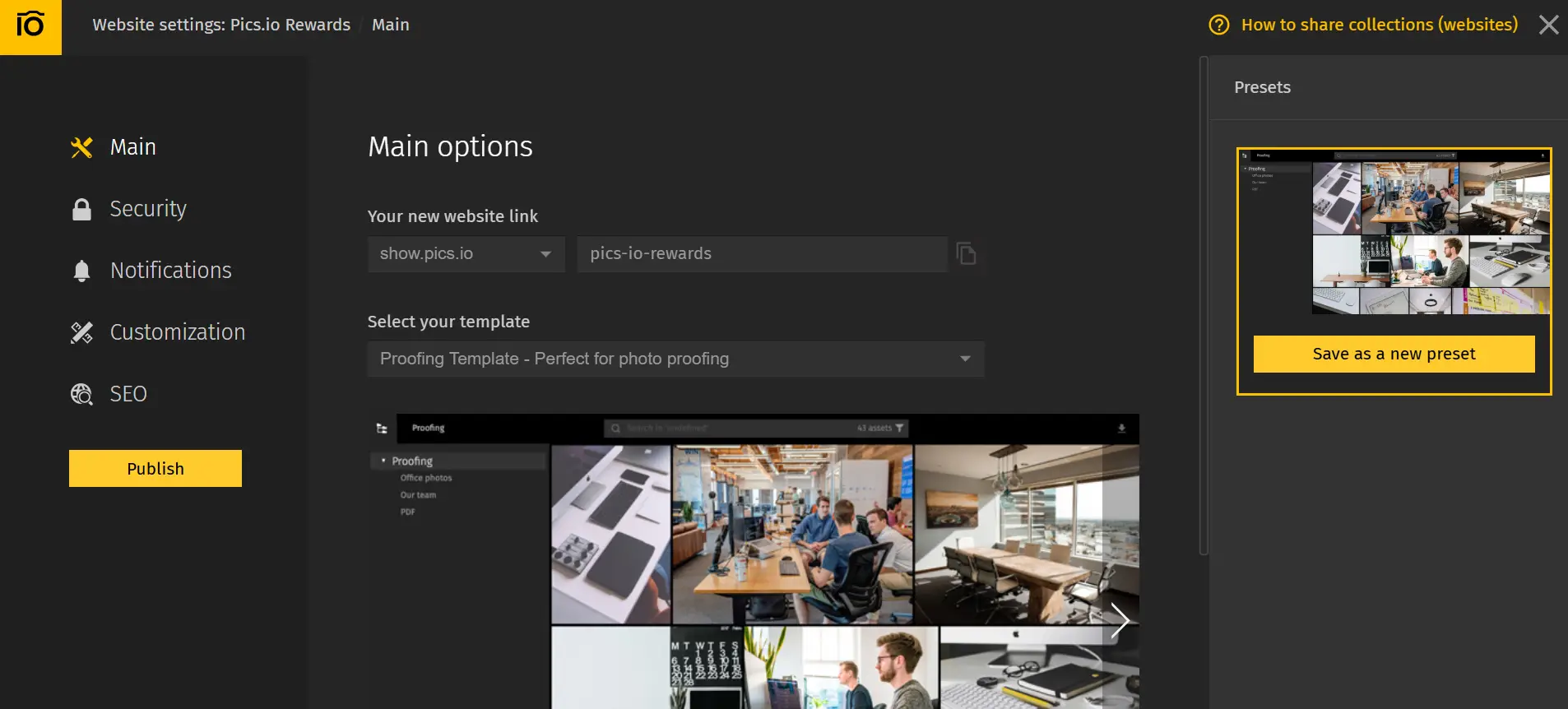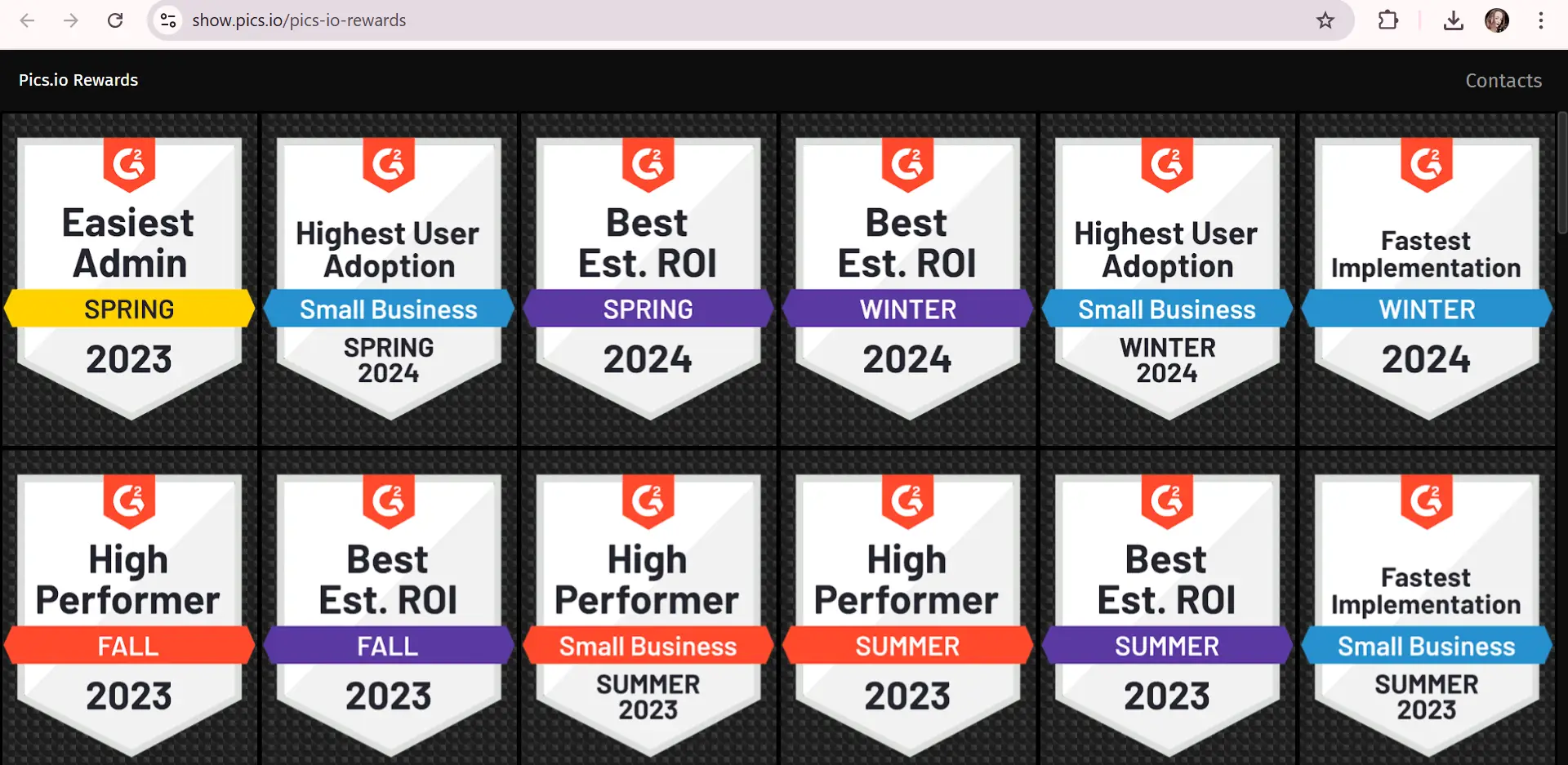Contents
If you’ve ever signed into a single page where all your files, updates, or services are waiting for you in one tidy place, you’ve already met a web portal. But what is a web portal, exactly? Think of it as a website with a twist: instead of showing the same static content to everyone, a web portal is a centralized access point that adapts to its users. It delivers personalized information, secure access, and often handy tools for collaboration.
At Pics.io, when we first built this feature into our DAM, we called it “websites.” It made sense to us—after all, you could share assets externally and present them like a clean, well-organized website. But then we noticed something: customers kept calling them portals. And they were right. Portals are more than pages; they’re gateways tailored to whoever logs in.
Today, businesses, schools, and even consumer brands rely on portals to simplify access, cut down on confusion, and create smoother experiences. In this article, we’ll walk through the web portal definition, how it differs from a regular site, the main types you’ll come across, real-world examples, and why they matter. We’ll also show how portals tie into digital asset sharing—a lifesaver for teams juggling massive libraries of creative files.
How a Web Portal Differs From a Regular Website
It’s easy to confuse a portal web site with a standard site, but the difference is important. A web site portal is not just a collection of public pages—it’s a secure, curated environment where users see only what’s relevant to them.
Here’s a quick comparison:
So, while a website might explain who you are, a portal web page is where real interaction with users happens.
Types of Web Portals
Not all portals are the same. Depending on the audience, we can group them into several key categories.
Enterprise & Business Portals
An enterprise web portal or business web portal helps organizations unify access to data, apps, and services across departments. A B2B web portal or B2B e-commerce web portal can connect partners and resellers, providing them with product catalogs, pricing, or reports.
Customer & Client Portals
A customer web portal or client web portal gives consumers direct access to their accounts—think online banking, shopping dashboards, or support centers. You may have seen them labeled as a consumer direct web portal or “my web portal.” They’re all about self-service and convenience.
Employee & Educational Portals
An employee web portal login page is the doorway to HR services, schedules, benefits, or training materials. Similarly, a school web portal brings students and teachers together in one place for grades, assignments, and announcements.
Specialized Portals
Some portals serve very specific purposes. A teams web portal might centralize collaboration for projects. A Eufy web portal live access provides remote monitoring for security devices. And historically, major search engines and web portals like Yahoo! and MSN blended search, news, and services into one entry point.
Web Portal Examples
To make this less abstract, here are practical web portal examples you’ll likely recognize:
Why Businesses Need a Web Portal
For many organizations, a web portal isn’t just a nice-to-have—it’s a real competitive advantage. Think of it as the front door to your company’s digital world. Instead of scattering files across email threads or juggling multiple apps, a portal brings everything into one secure, branded space.
Here’s what that means in practice:
- Personalization that matters – Every user sees only what’s relevant to them. An HR manager might log in to handle payroll, while a partner sees updated product catalogs. No noise, no distractions.
- All-in-one convenience – One login, one place. No more digging through inboxes for attachments or chasing down the “latest” version of a file.
- Security built in – With role-based access, only the right people get to the right information. That’s peace of mind for both you and your clients.
- A consistent brand experience – Whether it’s customers, employees, or partners, everyone interacts with a professional, branded portal that reflects your company—not a messy mix of Dropbox links and emails.
And here’s the big takeaway: a web portal isn’t just a fancier website. It’s a tool for managing and sharing digital content in a way that’s safe, organized, and scalable. That’s why more and more teams rely on portals specifically for asset exchange—whether it’s marketing files, product resources, or creative projects.
Curious to see this in action? Check how web portals work inside Pics.io for Digital Asset Sharing.
Why DAM Platforms Use Web Portals
When it comes to managing creative files, a customer web portal solution inside a DAM (Digital Asset Management) platform changes everything. Instead of emailing zip files back and forth—or worse, guessing which Dropbox link has the “final-final” logo—you give your partners, clients, or teammates a single branded portal.
From there, they can log in, search, and instantly find the assets they need—always the latest, always version-safe. No clutter, no mix-ups.
- For marketing teams, that means no more outdated logos sneaking into presentations.
- For agencies, clients see only the approved content, not rough drafts.
- For enterprises, portals make it possible to distribute thousands of assets securely and consistently across global teams.
In other words, a DAM-powered portal doesn’t just share files—it provides structure, control, and a professional experience that scales with your business.


From Definition to Action
So, what do you mean by web portal? At its core, it’s a specialized website that serves as a secure, personalized entry point to information, files, and services.
In this article, we explored the main types—enterprise, customer, employee, and specialized portals—and saw real-world examples from banking, HR, education, and B2B. The pattern is clear: whether you’re a school, a global brand, or a small team, portals create clarity and trust.
And here’s the practical part: if you’re tired of messy file exchanges, it’s time to turn them into a secure, branded web portal. With Pics.io, it takes minutes to set up and immediately makes collaboration smoother.

FAQ — Frequently Asked Questions
Is a web portal the same as a website?
Not quite. A website is public and mostly static, while a portal requires login and tailors content to the user.
Are search engines still considered web portals?
In the early 2000s, Yahoo! and MSN called themselves portals because they bundled search, news, and services. Today, the term is used more for secure, role-based access sites.
How does a web portal connect to digital asset management?
Through a portal, companies can share approved media files, track usage, and control access—making DAM platforms like Pics.io even more powerful.
What are the most common features of a web portal?
Typical features include secure logins, personalized dashboards, file or data access, communication tools, and sometimes analytics to track usage.
Do web portals improve security?
Yes. Unlike open websites, portals use authentication and role-based permissions to keep sensitive information safe.
Can a web portal replace email for file sharing?
In many cases, yes. Portals reduce clutter by keeping assets in one place, with version control and access tracking that email attachments simply don’t provide.
What industries use web portals the most?
Banking, healthcare, education, HR, e-commerce, and creative industries all rely heavily on portals to provide secure, personalized access to services or assets.
What’s the difference between an intranet and a web portal?
An intranet is usually an internal-only network for employees, while a portal can serve internal staff, external customers, or partners, depending on how it’s set up.
Did you enjoy this article? Give Pics.io a try — or book a demo with us, and we'll be happy to answer any of your questions.
Fidan AlievaFidan is a results-driven Sales Manager with a strong background in SaaS, B2B, and enterprise sales. Skilled in Agile methodologies and data analysis, she has successfully closed over 80 deals across business and enterprise segments, generating $150K in revenue.




